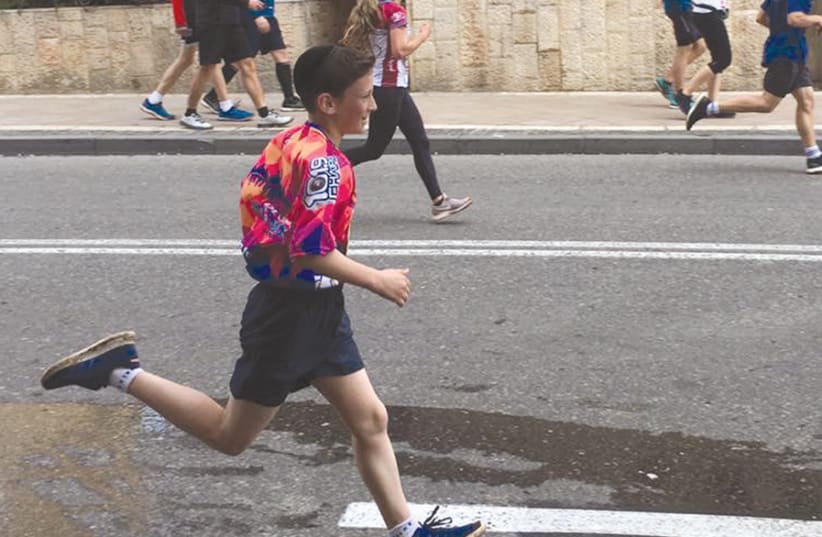A 42-kilometer run is a seriously impressive feat, particularly in the eyes of non-marathon runners. But it’s clear the Jerusalem marathon is more grueling for even the most experienced of distance runners, due to the hilly terrain along the scenic route through the majestic Old City. This year, 40-thousand runners from countries across the globe tackled the race, with some taking on the 21-km leg and others the shorter and more vibrant-looking 10-km option.
Why vibrant? Well, the race sees scores of runners spending several hours on the road in the names of various charities, many wearing colorful attire, some even running in wigs or with gadgets and props attached to their bodies. As a spectator, its hard not to get choked up watching groups of people of all shapes and sizes running to show support for a cause close to their hearts.
A large group of South African runners returned to the race this year to show their support for a charity that offers support to cancer patients. Several groups of Israeli athletes took on the race in the name of a range of local organizations that help various communities in need. My own sister flew to the country from Cape Town to help raise funds for United Hatzalah of Israel, as part of our son’s bar mitzvah charity project, so volunteer paramedics can help treat patients across the country.
As a now regular spectator of this annual event, it was difficult to watch thousands of athletes running in such a festive spirit, without reflecting on what had transpired just twelve hours before, about an hour’s drive from where we were staying for the marathon. Red alert sirens had been sounded in parts of the country, warning that rockets were being fired towards residential areas. That, sadly, isn’t that unusual. What was different this time was that sirens had sounded in the metropolitan city of Tel Aviv on a Thursday night, a popular night for people to go out in the city that doesn’t seem to sleep.
The two rockets fell in open areas, causing no harm. But for the few hours after those sirens had sounded, there was a sense of shock about the fact that those warning sirens had gone off in Tel Aviv for the first time since 2014. This obviously sparked much discussion and understandable concern that rockets had again tried to target populated residential areas.
I have often marveled at how quickly “life goes on” here in Israel after warning sirens have sounded. In some cases, particularly in the southern cities of Ashkelon or Sderot, residents have had to race to underground shelters in under 90 seconds, and then wait there as they hear the rockets flying overhead. Once the all clear is given, physically, it’s back to business as usual. The emotional effects are not quite as easy to see.
The day of the Jerusalem Marathon was no different – an observer would never have known that the night before, some 70 kilometers away, rockets had been sent toward a popular and highly populated part of the country. Because once authorities have given the green light, everyone will carry on with their lives, as per usual. It’s this kind of resilience and fighting spirit that continues to astound a relative newcomer to the country. ■
